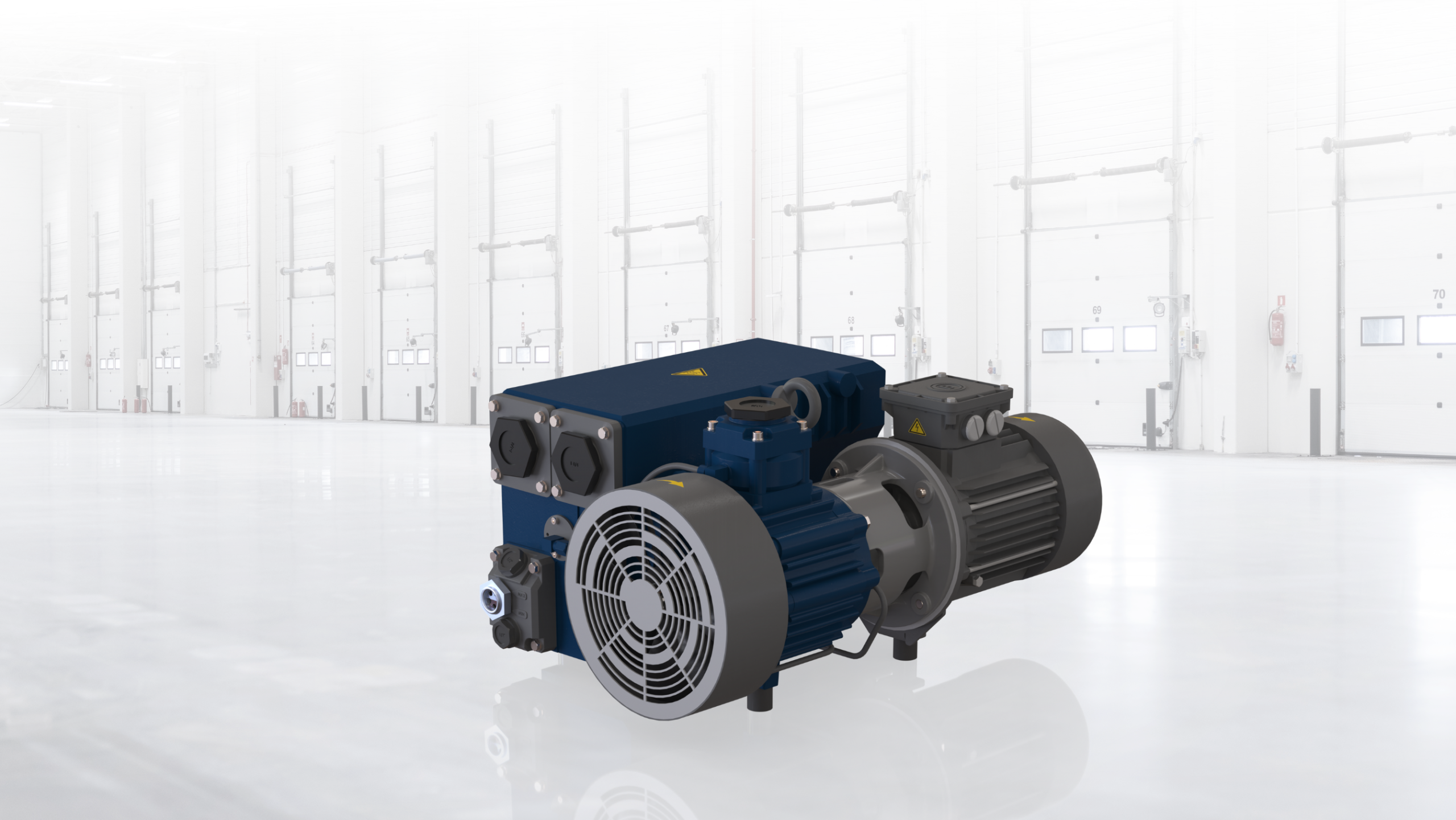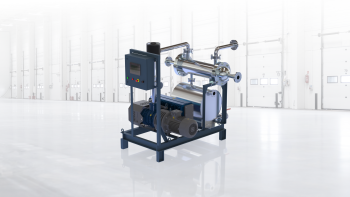Pharmaceutical Production is further strictly regulated to ensure safety and efficacy of the drug and to be free of contamination. A vacuum system plays a vital role in meeting these requirements since cleanliness and safety have to be maintained within production environments. Mechvac Technologies recognizes their importance across operations that involve drying, filtration, distillation, and packaging. This article looks into vacuum systems for pharmaceutical production: working, types, applications, advantages, and future trends while presenting ideas on how they can work to ensure drug quality and safety.
The Role of Vacuum Systems in Pharmaceutical Manufacturing
Vacuum systems have a variety of purposes in pharmaceutical manufacture. A vacuum system draws fine dust and airborne particles to remove them from the workspace, which has to be kept clean for safety and for ensuring that the products are up to standard. Even a small dust particle could affect the purity of the drugs-that is why vacuum systems are an integral part of quality control. High-level filtration methods – like HEPA filters – guarantee a sterile environment by removing particulates down to .18 microns with 99.995% efficiency.
The systems mitigate cross-contamination, critical when dealing with multiple drugs or ingredients and only one facility. It brings contamination clean risk to product safety, but vacuum systems are effective at removing waste to avoid the effect of residues on future batches. They are also efficient, supporting automatic cleaning and transfers of materials while also reducing downtime and labor.
Types of Vacuum Systems Used in Pharmaceuticals
Pharmaceutical operations rely on diverse vacuum systems, each suited to specific tasks. Here’s a breakdown of the primary types:
- Heavy-Duty Backpack Vacuums with HEPA Filters
Durably made out of stainless steel, these ultra-vacuums feature HEPA filters that can capture 0.3-micron particles at 99.97% efficiency. They can be used to clean floors, walls, equipment, and machinery interiors with smooth surfaces that do not allow bacteria to build up. - Centralized Vacuum Systems
Perfect for large facilities, these use a pipe network linked to a central unit for continuous cleaning across multiple zones. Customizable to fit layouts, they suit production halls and cleanrooms efficiently. - Vacuum Pumps
Essential for controlled vacuum environments, these include:- Dry Screw Vacuum Pumps: Oil-free, ideal for corrosive or hazardous materials.
- Liquid Ring Pumps: Handle gas and moisture-heavy vapors for evaporation or solvent recovery.
- Ejectors and Hybrid Systems: Achieve high vacuum for freeze drying, offering cost-effective solutions.
- Dust Containment Systems
Tailored for potent ingredients like HPAPI, these prevent hazardous dust escape with features like Wash in Place cleaning and Bag-in Bag-Out filter swaps, safeguarding workers and products. - Vacuum Cleaners for Clean Rooms
Meeting ISO4 standards, these use HEPA filters and autoclavable AISI316 stainless steel, ensuring no contaminants enter or spread in cleanrooms. - Integrated Vacuum Cleaners for Machinery
Mounted on equipment like tablet presses, these suction waste at the source, minimizing contamination and speeding up cleaning.
| Type of Vacuum System | Key Features | Primary Use |
| Industrial Vacuum Cleaners | HEPA filtration, stainless steel, easy sanitation | General cleaning, machinery maintenance |
| Centralized Vacuum Systems | Network of pipes, continuous cleaning, customizable | Large production facilities, cleanrooms |
| Vacuum Pumps | Dry screw, liquid ring, ejectors; oil-free options | Drying, distillation, filtration |
| Dust Containment Systems | WIP cleaning, BIBO filter replacement | Handling HPAPI, preventing dust escape |
| Cleanroom Vacuum Cleaners | ISO4 compliance, autoclavable materials | Cleanroom cleaning |
| Integrated Vacuum Cleaners | On-board suction, high efficiency | Waste removal from production machines |
Applications of Vacuum Systems in Pharmaceutical Processes
Vacuum systems support various manufacturing stages, enhancing product quality and safety. Key applications include:
- General Cleaning and Machinery Maintenance
Keeping production zones and equipment dust-free prevents residue buildup, reducing bacterial risks and maintaining performance. - Suction of Suspended Fine Dust
Airborne dust from powders poses health and quality threats. High-efficiency filters in vacuum systems capture it at the source, stopping its spread. - Freeze Drying (Lyophilization)
Used for sensitive drugs like vaccines, vacuum systems create low-pressure conditions for sublimation, removing moisture without damaging structure. - Vacuum Distillation
Purifying solvents at lower temperatures, this process protects heat-sensitive compounds, with vacuum systems ensuring efficiency and purity. - Pneumatic Conveying
Closed systems transport powders and granules safely, avoiding contamination, especially for hazardous or sensitive materials. - Packaging Waste Removal
On packaging lines, vacuum systems clear trimmings from blister packs and labels, maintaining cleanliness and reducing downtime.
| Application | Vacuum System Used | Benefit |
| General Cleaning | Industrial Vacuum Cleaners | Maintains hygiene, prevents contamination |
| Fine Dust Suction | Vacuum Cleaners with HEPA Filters | Protects workers, ensures product purity |
| Freeze Drying | Vacuum Pumps (Ejectors, Hybrid Systems) | Stabilizes sensitive drugs |
| Vacuum Distillation | Dry Screw or Liquid Ring Pumps | Purifies heat-sensitive compounds |
| Pneumatic Conveying | Pneumatic Conveyors | Safe, contamination-free material transfer |
| Packaging Waste Removal | Integrated Vacuum Cleaners | Reduces downtime, maintains cleanliness |
Benefits of Vacuum Systems in Pharmaceuticals
Using vacuum systems in pharmaceutical production delivers several advantages, improving efficiency and quality:
- Maximum Hygiene: Dust and contaminant removal keeps environments sterile, cutting bacterial risks and ensuring purity.
- Reduced Machine Downtime: Quick cleaning and waste handling keep production flowing smoothly.
- Improved Safety: Hazardous dust removal protects workers, with features like Atex certification for explosive dusts.
- Avoidance of Cross-Contamination: Waste containment stops residue from affecting new batches.
- Enhanced Product Quality: Clean conditions meet strict regulatory demands.
- Increased Efficiency: Streamlined processes like material transfer save time and labor.
Future Directions and Innovations in Vacuum Technology
Vacuum systems will continue to evolve; modern filtration will capture smaller particulates increasing safety and cleanliness/sanitation issues. Energy efficient pumps will support efforts to reduce costs and decrease the environmental impact of using pumps while still allowing users to meet sustainability targets. The Internet of Things (IoT) means smarter systems that monitor vacuum performance, and will predict what needs to be maintained as well as automate the vacuum into a production line with other connected systems.
Conclusion
Vacuum systems stand as a backbone of pharmaceutical manufacturing, ensuring clean, safe, and compliant production environments. From industrial cleaners to pumps and containment units, they maintain quality, protect health, and optimize operations. With technology advancing, these systems will keep driving efficiency and excellence in drug production.
Manufacturers aiming to boost processes benefit from investing in top-tier vacuum systems. Understanding their types, uses, and advantages helps companies choose solutions that elevate capabilities and meet high standards. For tailored options, explore Mechvac Technologies.







